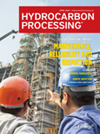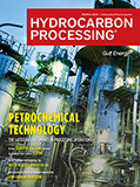Process Control
Asahi Kasei collaborates on development of recycling technology for inexpensive, high-quality carbon fiber
Asahi Kasei, a diversified Japanese multinational company, has developed a new technology for recycling carbon fiber plastic compounds together with the National Institute of Technology, Kitakyushu College and Tokyo University of Science.
Vietnam's largest refinery's RFCC unit shut for troubleshooting
Vietnam's largest refinery, Nghi Son Refinery and Petrochemical (NSRP), has shut a residual fluid catalytic cracking (RFCC) unit for "troubleshooting", two sources familiar with the matter said.
New state-of-the-art in sulfur recovery?—Part 2: Environmental benefits
It is widely accepted that state-of-the-art sulfur recovery technologies utilize the modified Claus process as well as some extension technology on the tail gas.
Fast ion chromatography analysis for determining biofuel sugars
All industrial processes require reliable, accurate and timely methods for analyzing process chemistry.
Online Feature: CCUS: Dispelling myths about risk
The presence of a strong regulatory structure, risk valuation tools that suggest lower risk values than previously envisioned and access to available insurance can help dispel the myth that CCUS is too risky and help everyone—project developers, financiers, policy makers and the public—have greater confidence in CCUS as it develops into a more widespread industrial activity.
The heavy toll on sulfur blocks
The tightening of environmental norms and emissions specifications provides additional challenges to refining.
Cut emissions and fuel while increasing capacity in fired heaters
According to a recent digital refining article,1 fired heaters are responsible for an estimated 400 MMtpy–500 MMtpy of CO<sub>2</sub>, with at least 73% of average refinery CO<sub>2</sub> emissions coming from combustion.
Anellotech offers drum-quantity samples of recycled BTX made from mixed waste plastics via Plas-TCat process
Anellotech is pleased to announce that it is offering drum-quantity product samples of aromatics produced from recycled mixed waste plastics.
Online Feature: Digitalization will help carbon capture and sequestration industry to be more efficient, safe, and profitable
While zero-carbon alternative solutions evolve, CCUS provides a near-term pathway to rapidly reduce the impacts of existing, difficult-to-decarbonize, emissions-intensive infrastructure and processes.
Decarbonizing your fired heaters with hydrogen fuel
Hydrogen has long been considered a high-value product, but not typically as a fuel for fired equipment.

- India receives fuel oil cargo in Russian SCF tanker after brief halt 4/26
- Biden administration (U.S.) to release SAF tax credit model 4/26
- Boeing, Wagner advance Australia’s SAF Industry 4/26
- S-Oil expects Q2 refining margins to remain steady then trend upward 4/26
- Vitol to charter supertankers from U.S. to Nigeria's Dangote refinery 4/26
- Refiner Valero beats profit estimates on resilient demand, tight supplies 4/26




